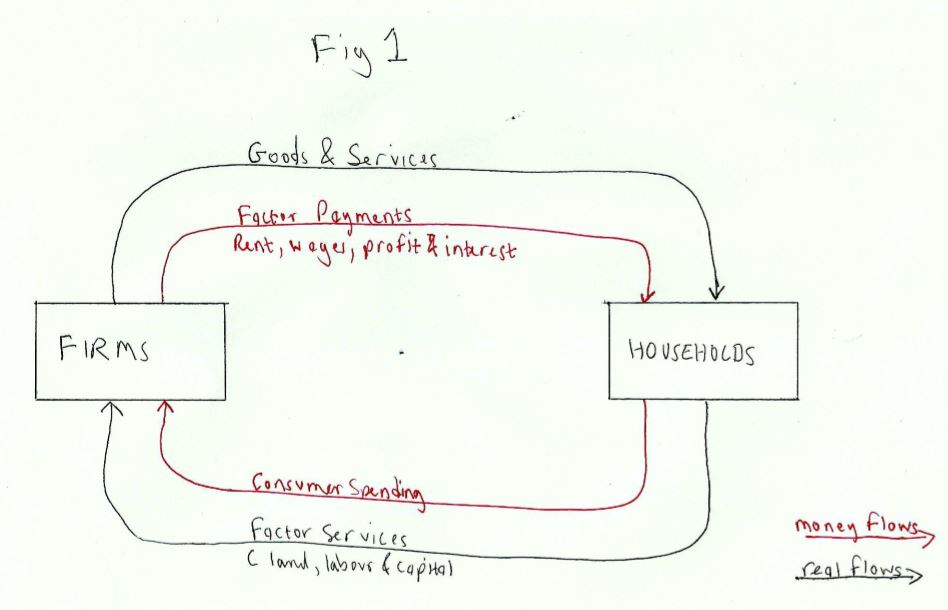National Income
The Circular Flow of Income
The income of a country can be calculated by adding up any of the following:
- __National income __– Total factor payments (rent, wages, profits and interest)
- National output – Total value of goods and services produced
- National expenditure – Total value of all spending on goods and services.
Income, output and expenditure are all __flows __(they occur at a certain rate over a period of time).
They all measure the same thing, but at different points in what economists call the circular flow of income. This is shown in a simplified model of the economy in Fig 1 below:
The model makes the following simplifying assumptions:
- The economy consists of two groups – firms and households
- Firms produce goods and services – households consume themselves
- Households own all the economic resources (land, labour, capital)
- The economy is __closed __(there is no foreign trade)
- There is no public sector ( no taxation or public expenditure)
- Households spend all their income (there is no saving)
The black lines on the diagram show the __real economy __(the production and consumption of goods and services).
The red lines show the __money economy __(the flows of payments for factor services by firms, and consumer spending on goods and services by households.
Let us suppose that a country’s income is £100m per year. This would mean that the total of consumer spending is £100m, because we have assumed households do not save. The £100m therefore passes to firms in exchange for goods and services produced. It therefore follows that the value of firms’ output is also £100m. The £100m firms receive for their output is then distributed to households in return for the factor services they have provided to make the goods and services.
We can see that in this simplified economy, all household income is passed on to firms as spending, and then back to households again as income. It follows that there is no reason for the level of national income to change; it is in stable equilibrium. The next section of notes looks at a more realistic model of the economy.

